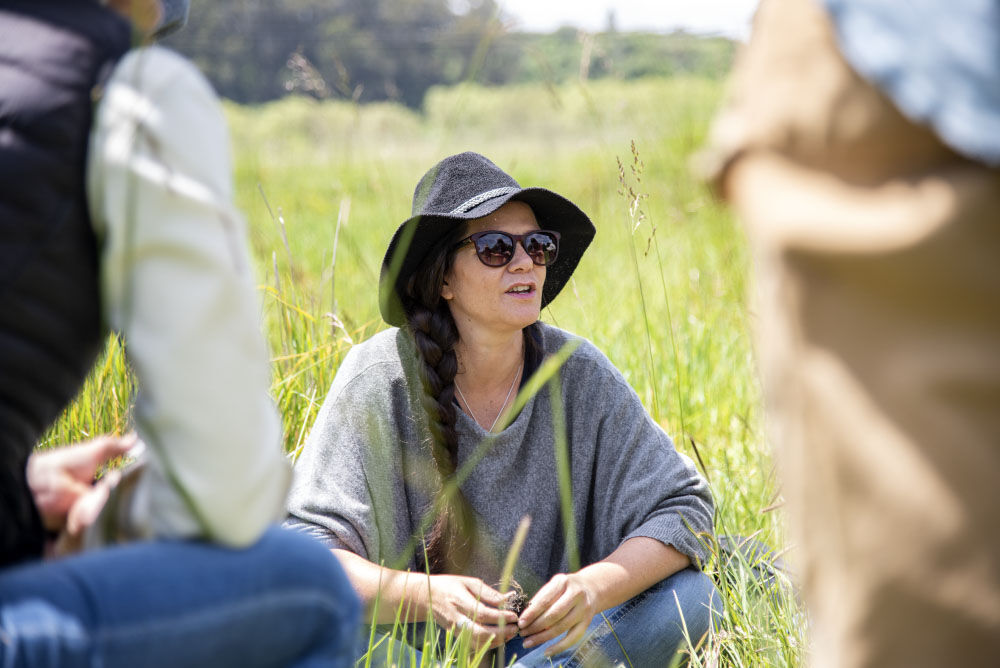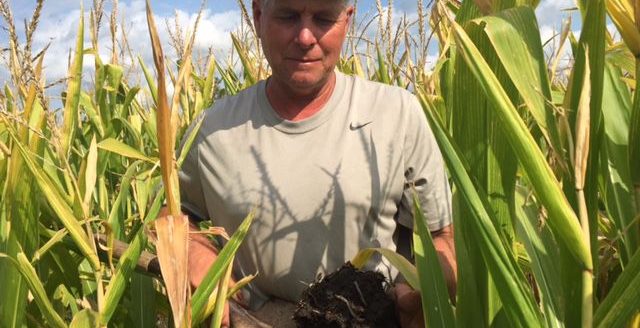Mindset, patience and thirst for knowledge drive soil health experts

Experience is a great teacher and Gail Fuller and Nicole Masters say soil health involves continuing education and evaluation.
Fuller is a diversified livestock producer who raises multiple crops in Severy, Kansas, and he uses the winter to learn from others too.
Fuller has always had an eye on soil health. His earliest work started with combating erosion. He had not learned yet about soil health microbiology, carbon cycle or water cycle. “It was literally about keeping the soil in place.”
In the mid-1990s he committed to no-till farming. There were trials and errors and he recognized it did not fully stop soil erosion.
“In the late 1990s I realized no-till was just a tool but not the answer like I thought it was,” Fuller said. “My management still played a huge role in the well-being of my farm.”
He remembers being told that no-till was the ultimate tool to use and earthworms would come back in abundance within three years.
“I had a picture of rain falling softly on my farm forever. That just did not happen,” Fuller said. “My management at the time then was a corn and soybean rotation. We had taken out the other four or five crops in the rotation.”
The corn he raised was chopped for silage so there was little left for the next soybean crop. He was removing all the carbon in the system and without any residue on the ground he was still facing erosion problems.
“That’s when I realized I could not just impose my will on my system. I had to make some changes and bring in other crops to bring carbon up into the system.”
Agro-ecologist’s view
Nicole Masters has more than 20 years of experience and methods through Australasia, which comprises Australia, New Zealand several islands in the region. As an agro-ecologist she focuses on agricultural production and shares her insight with producers in the United States.
Using components of chemistry, physics and microbiology, she looks at how the systems interplay plus how they work with the water cycle. She also looks at growth and yield potential while building soil resilience.
Farmers and ranchers have different goals and concerns when it comes to managing their operations, she said. The first step is to dig a hole and get familiar with the soil because that is the most valuable resource of a farm and ranch.
Masters said the farmer can then appreciate and value the soil because that is the difference between profitability and failure.
“We have a choice. We can continue to be on the treadmill with more and more inputs of which the costs are increasingly going up or we can start to cycle with nature and restore all the cycles,” she said.
Working with nature
Fuller realized he could not conquer nature. When he first introduced cover crops in the late 1990s, he struggled. He first planted radishes or turnips and while they helped attract earthworms and reduced compaction, he knew more work was needed because he was still facing erosion problems.
In 2002 he re-introduced wheat into his rotation, which on an eastern Kansas farm can be problematic because conditions including high humidity make the crop susceptible to disease.
“The first year of growing wheat again in the rotation with corn and soybeans everything clicked,” Fuller said. “The corn and bean yields went up and the erosion went down.”
It also came at a time when he began to understand that besides earthworms there were other living organisms in the soil. The carbon cycle, water and minerals and the interaction started to come into focus.
Producers should ask themselves whether they have compaction, surface crusting and other problems, Masters said. Structure is built through microbiology, but microbiology does not come in a bag. Instead, the structure comes by supporting the microbiology and having a system that works.
The rainwater needs to infiltrate soil and support root growth and, in some regions, continue to filtrate underground aquifers, she said.
Producers in many agricultural regions are facing both drought and flash floods and sometimes in the same year. Masters said that is why it is important to have water absorbed into the soil.
Results orientation
By the early 2000s Fuller started to see the results he wanted. He pushed ahead to learn more about the soil microbiology and carbon cycle.
Fuller realized he could reduce input and chemical use not only to help his bottom line but also to improve the environment for his farm, his neighbors and community at large. Water quality also improved with fewer toxins, he said.
Like humans that are sick, the soil microbiology can get sick, Masters said.
So much of plant health, performance and yield depends on everything working right, she said, and if that’s the case the producer doesn’t necessarily have to go to get an insecticide or fungicide.
“We can restore health, resilience and profitability. It is incredibly exciting and that is why we are seeing so much more interest,” she said.
There is an initial adjustment curve and Fuller knows that educating landlords on the importance of cover crops is a challenge, he said. He remembers the risk of losing ground because research was not as widely known or accepted as today.
“It was difficult to educate them because I did not have a lot of good resources and I did not have the ability myself to be a good communicator to my landowners, to my banker or to my team,” Fuller said.
Greater emphasis is needed to be placed on the “why” and mental side to give farmers more time to digest information and communicate it to their entire team, he said, so they have confidence it will be successful.
What producers can do is look from the top when addressing topics such as regenerative agriculture, Masters said. “Practices are guided by your philosophy and your beliefs.”
About half of her instruction to producers focuses on human behavior, organization learning and system thinking.
“It’s not so much about the practices but how do we implement the practices,” Masters said.
Cover crops could wind up working against a producer if he does not have a philosophy of working with nature. Working with nature can boost the insect pollinators’ environment. That’s why she stresses resiliency and building soil health for the long term.
Feeding microbiology pays off, she said. Before implementing a practice, the grower has to answer questions about the why and how of what he wants to accomplish.
Information for this story was from the Soil Solutions podcast with Jessica Gnad, the executive director of Great Plains Regeneration and soil health content consultant for High Plains Journal. Visit soilhealthu.net/podcasts to hear the podcasts. Sign up to receive the monthly Soil Health HPJ Direct newsletter and Soil Solutions podcast notifications by visiting hpj.com/signup and checking Soil Health.
Dave Bergmeier can be reached at 620-227-1822 or [email protected].



